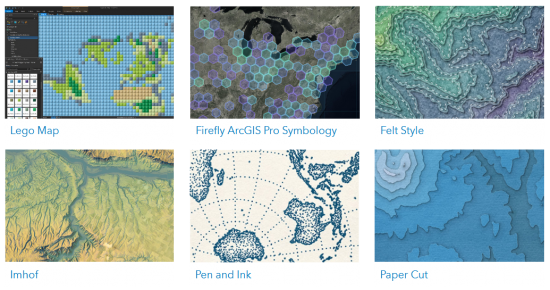
Use these datasets to help you answer questions like “how has the population changed over the years?” and “what is the age/gender structure of the population?” This is a valuable addition to the ArcGIS Living Atlas because of the insights these datasets can provide for demographic research. Population estimates are calculated for the years 2012-2019 and are broken down into age range and gender. The seven feature layers record mid-year population estimates for England and Wales for a selection of administrative and census areas. In the spirit of Census Day 2021 back in March, we at Esri UK curated the Office for National Statistics Mid-year Population Estimates for England and Wales and have made this available in the ArcGIS Living Atlas. Population estimates are one of the most widely used national demographic datasets. People Learn about the demographics of England and Wales Read this article to find out more.įor more information on which services are no longer updated and suggested vector basemap alternatives, see our blog.
#STYLE MANAGER ARCGIS RASTER UPDATE#
If you are an ArcGIS Online organisation administrator, you should update your basemap gallery to use the new Esri vector basemaps. This move is to help optimise the performance and personalisation of basemaps for our users. As an alternative, there are a range of new GB vector basemaps available to use including GB Cartographic, Light Grey and more which are all available on the ArcGIS Living Atlas. These four services will no longer be updated but will remain available to use. Another bonus is that you can also customise the content and symbology of these basemaps using Esri’s vector tile style editor to really make the map your own.Īs of July 2021, raster basemaps including OS Open Carto, Background, Greyscale and Greyscale Labels have entered mature support. These basemaps provide a great backdrop and help enhance the localisation of your GIS work. The labels in these basemaps are in local language providing Welsh, Scottish Gaelic and local English names where they are available. You can find these localised maps in the popular basemap styles such as GB Cartographic, Topographic and Light Grey. One of our most recent additions to the ArcGIS Living Atlas are the new GB Local Names basemaps using data supplied by the Ordnance Survey. Improving accessibility remains a key focus for Esri UK.

Localise your maps with GB Local Names basemaps Read more about other use cases for these datasets in our blog. It also helps with analysing data in relation to these sites. These feature services are useful to understand the location and extent of key sites such as schools and hospitals. This includes Air Transport, Education, Road Transport and more.

Whereas the OS OpenMap Local Functional Sites represent the area or extent of certain types of function or activity. This service also has an Important Buildings layer which classifies buildings into different themes such as: Cultural Facility, Education Facility, and Medical Facility. The OS OpenMap Local Buildings provides an overview of building shape and size. This includes the OS OpenMap Local buildings and OS OpenMap Local Functional Sites which cover England, Wales and Scotland.
#STYLE MANAGER ARCGIS RASTER SERIES#

The ArcGIS Living Atlas features high-quality, authoritative content from Esri, our partners and users worldwide – which can be seamlessly integrated across ArcGIS. My favourite thing about the ArcGIS Living Atlas is that each map, app and data layer has been curated to support your work. As the Data Curator for Esri UK, I’m responsible for looking after UK contributions into the ArcGIS Living Atlas of the World.


 0 kommentar(er)
0 kommentar(er)
